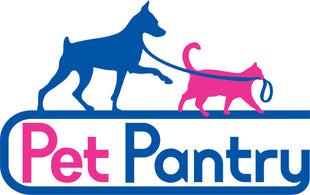When Do I Switch from Puppy/Kitten Food to Adult Food?
Welcoming a furry friend into your life is a whirlwind of cuddles, chaos, and questions—one of which is bound to be: “When do I switch from puppy or kitten food to adult food?” Whether your little bundle of fur is a curious kitten or a boisterous puppy, their dietary needs change as they grow. Don’t worry; we’re here to guide you through this important milestone in your pet’s life!
Why Puppies and Kittens Need Special Food
Puppy and kitten foods are like the superhero snacks of the pet world. They're packed with extra protein, calories, and nutrients to fuel your young pet’s rapid growth and high energy. These specially formulated foods support:
-
Brain and eye development (thanks to DHA)
-
Healthy bones and teeth (cue the calcium and phosphorus)
-
Muscle growth (protein power!)
But just like kids outgrow onesies, your pet will eventually need more balanced nutrition to match their adult lifestyle.
The Magic Age for the Big Switch
There’s no one-size-fits-all answer, but here’s a general guideline:
-
Puppies: Around 12 months old, but large and giant breeds may need puppy food until 18–24 months.
-
Kittens: Typically at 12 months old.
Smaller breeds may mature faster, while larger breeds take a bit more time to reach adulthood. Check with your vet to confirm the right timing for your pet's transition.
How to Transition Like a Pro
Switching your pet’s food isn’t a race—it’s a gradual process. Abrupt changes can upset their tummy, leading to... well, let’s just say messes you’d rather avoid. Follow this plan over 7–10 days:
-
Days 1–2: Mix 75% puppy/kitten food with 25% adult food.
-
Days 3–4: Mix 50/50.
-
Days 5–6: Mix 25% puppy/kitten food with 75% adult food.
-
Day 7: Serve 100% adult food.
Watch your pet’s behavior and stool during the transition. If there are any issues, slow down the process or consult your vet.
Signs Your Pet Is Ready
Besides hitting the age milestone, these clues might mean it’s time to switch:
-
Weight stabilizes: They’re no longer growing like a weed.
-
Less energy-intensive play: They’re maturing emotionally and physically.
-
Healthy vet check-ups: Your vet may recommend the switch based on growth and development.
What Happens If You Don't Switch?
Keeping your pet on puppy/kitten food for too long can lead to:
-
Excess weight gain: Too many calories for a slower metabolism.
-
Imbalance of nutrients: Adult pets need different proportions of protein, fat, and vitamins.
Choose the Right Adult Food
Not all adult pet foods are created equal! Look for:
-
High-quality ingredients tailored to your pet’s size and breed.
-
AAFCO certification (it means the food meets nutritional standards).
-
Special needs formulas, if your pet requires weight management or sensitive stomach support.
You can email, call or visit one of our locations to get extra information about your pet’s transition if you feel like you need an expert opinion! Our staff has an experienced background on nutrition and they are more than happy to help you!
The Final Scoop
Switching to adult food is a big step for your furry companion, signaling their growth into a healthy, happy adult. With the right timing, gradual transition, and plenty of love, your pet will thrive in this new phase of life.
And don’t forget—your local pet store (hint: Pet Pantry!) has everything you need to make the switch seamless. From personalized recommendations to top-notch brands, we’re here to help every paw step of the way.
Ready to transition? Drop by or give us a call—we’d love to hear about your pet’s journey!

